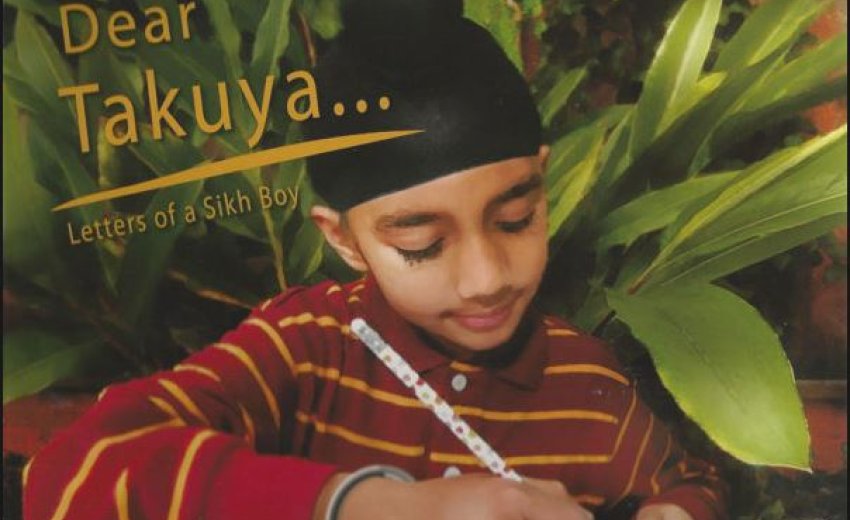All Sikh parents know it fairly well that keeping a unique Sikh identity of their boys in the Western world puts their children through a roller coaster every day of the school. In the harsh environments with constant peer pressure to look like others, the hope was that with an increase in the numbers of Sikh boys in a school, there will be some solace. But alas! That didn't turn out to be the case.
First of all, the children being children, they always remain very sensitive to the emotional trauma inflicted upon them by the adverse comments from their peers. When it comes to having a uniquely distinct appearance, different than majority, the likelihood of such undesirable events increases. Second, the majority of Sikh children are not exposed enough to the true principles of their faith by their parents or by their religious institutions to face the daily dilemma. Most of the parents simply resign to an easy path and let the Guru-given Sikh identity go down the drain while they watch it happen passively. Yet, once in a while, there appears a bright ray of hope that attempts to brighten the darkness by thwarting this downward trend.
Jessi Kaur, a devoted Sikh woman and co-founder of International Institute of Gurmat Studies (IGGS) has a lifelong experience of teaching Gurmat by organizing World Wide Sikh Youth Camps since 1972. Through her latest unique work, 'Dear Takuya,' an awe-inspiring book written in the format of letters by an eight year old California Sikh boy to his Japanese pen-pal, Takuya she takes up the challenge of righting the wrong. She explains the Sikh faith to an uninitiated child in another continent in a child's language sprinkled with innocent humor and spontaneous wit. And in this she succeeds fully by penetrating and instilling the true concepts of Sikh faith in those tender young hearts going through their formative years. In each of the letter that Simar writes to his friend, he shows his curiosity about his friend's culture by asking him about Japanese- tea ceremony, Japanese culture and admires his friend's skills in origami and Kanji script.
Starting with an introduction to the Sikh faith, that doesn't go beyond one page; the author succeeds in capping the entire ocean of relevant information in a small vessel. That done, there are 16 short letters, most not being more than two pages each.
Almost all long-haired Sikh boys in the countries of West are perceived to be girls and Simar is no exception. The painful incident at his school where he is bullied by a classs-mate for his Patka and then finding uninvited sympathy from a caring little chubby class-fellow, Patty, truly lays open the wounds of all parents who have been through such journeys. The writer offers a solution to Sikh parents. Offer help in making teachers and students learn about Sikh faith and Sikh identity!
Simar's visit to the Gurdwara with his classmates Andrew and Patty is used to explain innocently, yet in a humorous way, a Sikh Gurdwara, Gurdwara services and etiquettes as well as the concept of the langar. When he takes his friend Andrew to Gurdwara for the first time ever, Andrew falls in love with sweetness of Karah Prasad. It makes Simar think that Andrew must have many sweet teeth, not just one! For he not only ate Simar's but asked for third helping. Waiting in langar line, when Andrew takes out money to pay for the meals as he is not a Sikh, Simar's explanation that Guru ka langar is a Sikh tradition of serving free food to all who come, indeed, sums up the essence of Sikh faith in a cool way.
Simar's stay in a Sikh youth camp is used for explaining Sikh faith to Takuya, but it is done in a child-friendly way. "We may even call God a 'She' because God is neither male nor female. I remembered what my mother had said about God being both a mom and a dad" What a simple way of solving the most complex riddle? About God he adds, "Oh, He also doesn't live anywhere. Actually, He lives everywhere. I guess that's kind of confusing." Pure, yet true innocence of a child's mind! And then explaining the three basic concepts of Sikh faith, i.e. Naam Japna (Remembering God), Kirt Karni (Earning an honest living) and Vand Chhakna (Sharing with the needy) Simar rationalizes that they must be precious like gold to be called golden rules. "Sharing is not always easy," Simar personalizes, "When I have a new toy, I don't like sharing with kids who don't share with me." But then he corrects his stream, "I will try to remember this the next time I don't want to share."
Waking early in the morning is a camp routine for all the Sikhs, but poor little Simar naturally doesn't like it. He complains to his pen-pal that when whistle wakes everyone in the morning, he wishes he were at home for he could ask his mom to let him sleep for ten more minutes. What a truth! The explanation of Naam Simarn as well as the significance of 'Baanis of Nitnem' is to the point and appropriate. Helping the needy is corroborated with child Nanak's Sachaa Sauda story and Guru Ka langar. Explaining to Takuya how Sikh name are chosen, he elaborates the meaning of Singh and Kaur as well.
All the letters in the book are appropriately supplemented through beautiful paintings by a Canadian artist Brian Johnston. The quality of his work is above-par and interesting. The picture of Golden Gate Bridge has deliberately been chosen to suggest building bridges in a multicultural, diverse world as per writer. This 50 pages book has larger than usual book-size expensive glossy paper. The title painting of Simar is exquisite and appears full of life.
To purchase the book: Please go to www.deartakuya.com
